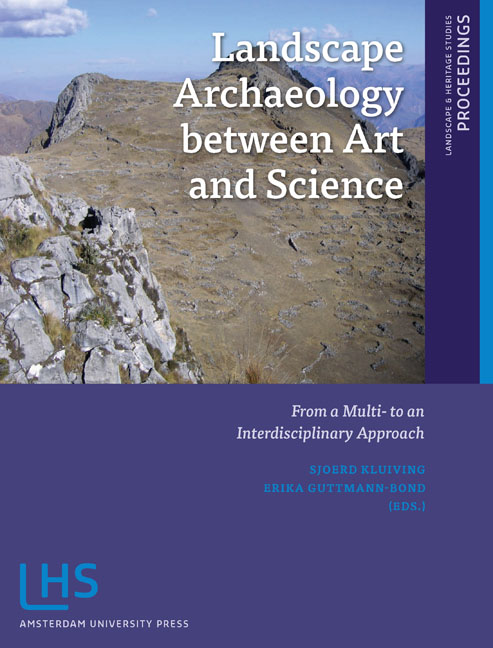Book contents
- Frontmatter
- Contents
- Preface
- Introduction: LAC2010: First International Landscape Archaeology Conference
- THEME 1 HOW DID LANDSCAPE CHANGE?
- THEME II IMPROVING TEMPORAL, CHRONOLOGICAL AND TRANSFORMATIONAL FRAMEWORKS
- THEME III LINKING LANDSCAPES OF LOWLANDS TO MOUNTAINOUS AREAS
- THEME IV APPLYING CONCEPTS OF SCALE
- THEME V NEW DIRECTIONS IN DIGITAL PROSPECTION AND MODELLING TECHNIQUES
- THEME VI HOW WILL LANDSCAPE ARCHAEOLOGY DEVELOP IN THE FUTURE?
- Miscellaneous Endmatter
1.5 - The change analysis of the green spaces of the Historical Peninsula in Istanbul, Turkey
Published online by Cambridge University Press: 21 January 2021
- Frontmatter
- Contents
- Preface
- Introduction: LAC2010: First International Landscape Archaeology Conference
- THEME 1 HOW DID LANDSCAPE CHANGE?
- THEME II IMPROVING TEMPORAL, CHRONOLOGICAL AND TRANSFORMATIONAL FRAMEWORKS
- THEME III LINKING LANDSCAPES OF LOWLANDS TO MOUNTAINOUS AREAS
- THEME IV APPLYING CONCEPTS OF SCALE
- THEME V NEW DIRECTIONS IN DIGITAL PROSPECTION AND MODELLING TECHNIQUES
- THEME VI HOW WILL LANDSCAPE ARCHAEOLOGY DEVELOP IN THE FUTURE?
- Miscellaneous Endmatter
Summary
ABSTRACT
The Historical Peninsula, having a nearly 8500 year historical background, serving the capital city of three empires, having a strategic position, offering unique natural beauties, architectural and archaeological values and a stunning skyline, was declared as a protected area in 1985. However, the area has been subject to planning legislation several times, although the planning did not address some crucial issues of the city, and caused the conversion of the historical downtown into a suburban area. This is one of the common problems of historical cities. As a consequence, the Historical Peninsula, through both social and physical changes, has experienced changes in entity and identity – and still it is changing.
The purpose of this study is to investigate the spatial formation of the Historical Peninsula from past to present through literature review and visual materials (such as maps and photographs), using both qualitative and quantitative research methods. I will aim to establish the location of green spaces, and I will consider the alteration of those spaces due to changing social structures, political decisions, planning legislation and physical conditions. Several maps of the peninsula, prepared at different dates and time periods, were selected to conduct the study. These maps vary in resolution and appearance, but the aspects and size of the green spaces are specified. As a result of the study, functional and spatial changes of green areas in Historical Peninsula were examined in its historical process.
KEYWORDS
urban landscape, urbanisation, change analysis, green spaces, Historical Peninsula
INTRODUCTION
The function of cities, in general, has changed and developed rapidly over time, depending upon various factors. Cities have also expanded, and as a result of these changes they have gained different identities, in terms of history and politics. The political, physical and technological changes have resulted in the destruction of the urban textures, largely because of changes in social values which have lead to new demands. Because of all these factors, the development areas in big cities have become, in a historical sense, collapsed areas.
The transformation process still continues in the city of Istanbul today, as it has occurred in other developed cities around the world. The city of Istanbul has attracted a huge number of people from the Anatolian part of the country, who arrived as immigrant workers.
- Type
- Chapter
- Information
- Landscape Archaeology between Art and ScienceFrom a Multi- to an Interdisciplinary Approach, pp. 81 - 96Publisher: Amsterdam University PressPrint publication year: 2012



